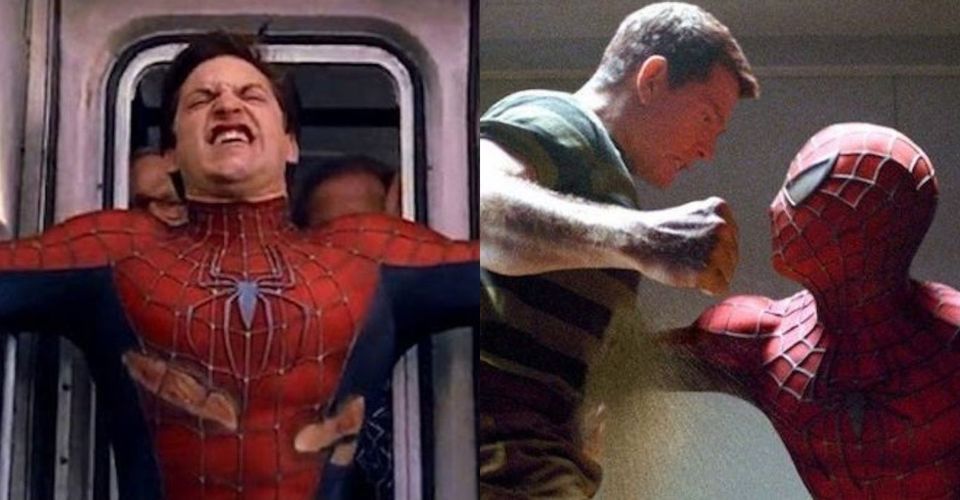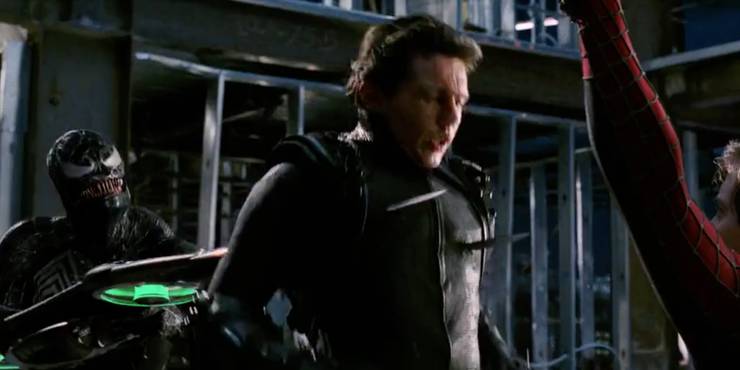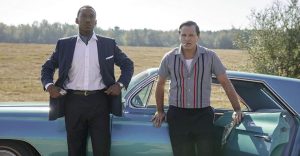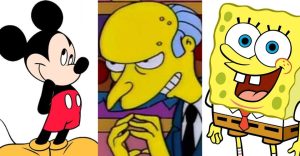10 Most Unexpected Things To Happen In Sam Raimi’s Spider-Man Trilogy

Warning! This article contains SPOILERS for Spider-Man: No Way Home!
From the origins of Doc Ock to the death of Uncle Ben, the Sam Raimi trilogy of Spider-Man films had plenty of memorable moments for the beloved Marvel character. With the excellent performance of Tobey Maguire leading the franchise, these films became a global force, proved the power of superhero movies, and paved the way for the creation of the MCU.
Due to the upcoming 20th anniversary of the Raimi films and Maguire’s role in Spider-Man: No Way Home, audiences are revisiting these beloved movies. Over the course of the three movies, there have been many unexpected twists to the plot from the revelation about the true killer of Uncle Ben to a now-iconic revelation in Spider-Man 2.
Harry’s Selfless Turn

Spider-Man 3 marked the ignoble end of the Sam Raimi Spider-Man films due to being a bloated mess of a movie with three villains competing for screentime and attention. One that audiences were expecting was Harry Osborn to take his role as the new Green Goblin in order to take his revenge on his best friend for the death of his father.
Toward the end of the film, however, rather than teaming up with the other two villains (The Sandman and Venom), Harry showed a change of heart. Instead, he and Peter teamed up to take out the other bad guys once and for all. The moment definitely subverted expectations of a major battle between best friends but provided a satisfying if tragic ending for Harry’s arc in the series.
Peter Quits Being Spider-Man

Spider-Man 2 is considered to be one of the greatest superhero movies ever made due to the tight, dramatic plot that swings between comedic and heartache. In a superhero movie, however, audiences don’t expect to see the hero decide to quit being a hero. When Peter loses his powers in the film, however, he decides to do just that.
For a moment, it looks like he will keep on being Spider-Man after having a dream about his late Uncle Ben. Shocking, he doesn’t change his mind. For someone who is so dedicated to the phrase “With great power comes great responsibility”, Peter throws it aside when he no longer has great power. Instead of finding an inner power with himself, it’s like being Spider-Man ended up meaning nothing to him.
The Death Retcon

The death of Uncle Ben partly due to Peter’s arrogance and hubris is a large motivating factor for the character’s journey to becoming a superhero. Add in that, much like Batman’s parents, Ben’s death was senseless shows that anyone can be a victim of a crime, that it could happen at any place and any time. Death is the motivating factor, not delving into the criminal’s psyche for a random crime.
That’s why in Spider-Man 3, it was so unexpected that Uncle Ben’s death was retconned to include new villain Flint Marko/The Sandman. Add in a sympathetic backstory and battled screentime for the character, the whole thing just feels shoved in for the sake of drama and to make Peter more susceptible to Venom’s influence. Even so, it was still surprising to see the death of Uncle Ben explored further three movies in.
Peter Honors Norman’s Last Request

Willem Dafoe’s Green Goblin is one of the most twisted and sadistic villains that Peter Park had faced during the three Raimi films. Yet the troubled Norman Osborn, who was driven mad by his alternate personality, did not deserve scorn, only pity. As he dies from his wounds, Norman asks that Peter ensure that Harry doesn’t find out about his supervillain persona.
Peter, however, doesn’t have to do what Norman asks of him yet shows his heroic heart by doing it. It’s an unexpected moment of genuine kindness and empathy toward someone who had been taken prisoner by their own mind. With this scene, it shows Peter’s evolution as a hero in his origin story.
Mary Jane Chooses Peter

The fraught relationship between Peter Park and Mary Jane Watson is at the heart of the Raimi films. Time and again, the two try to make their romance work only to realize that the course of true love doesn’t run smooth. In Spider-Man 2, it looks like MJ plans to go through with her wedding J. Jonah Jameson’s son, the astronaut, after Peter turned down her confession of love in the first film.
In the second movie, however, Mary Jane learns of Peter’s identity and realizes that he kept her away out of his love for her. Instead of going through with the wedding, she shows up at Peter’s place in her wedding dress and gives him her total acceptance. The scene highlights that, despite the difficulty in their relationship, Peter and Mary Jane are always going to be drawn to each other with things, hopefully, working out in the end.
Peter Turns Down Mary Jane

There’s a certain formula to superhero movies, especially origin stories. The hero gets his powers, goes on a journey of self-discovery, gets the girls, and saves the day. In the original Spider-Man, however, the Sam Raimi origin story quite cleverly subverts expectations. Peter doesn’t go off into the sunset with Mary Jane in the end, turning her down in one of the most surprising moments of the film.
Not only does it show that, no not every hero gets the perfect happy ending, but the 2002 movie also emphasizes that sometimes there has to be a sacrifice in order for a hero to preserve. In this instance, Peter sacrifices a relationship with Mary Jane in order to keep her safe and to follow his own sense of responsibility to be Spider-Man.
Otto Octavius Becoming Doc Ock

One thing that the Raimi films excelled at, in the first two installments of the trilogy, is giving a lot of depth and sympathy to the villains. Neither Norman Osborn nor Otto Octavius start out truly bad, it was a combination of circumstances, outside influences, and tragedy that brought them down the paths. While fans knew going into Spider-Man 2 that Octavius was going to become Doc Ock, it still felt so unexpected to see it play out.
A lot of this is due to the chemistry of Alfred Molina and Tobey Maguire, who both project a very father-son-like relationship on screen. There’s genuine affection and caring between the two actors. When Octavius turns to a life of a villain and has to go against someone he loved like a surrogate son, it really feels shocking and unexpected to see play out.
The Organic Webs

Much like how Webb-verse Spider-Man and the MCU’s Spider-Man were surprised that their counterpart could produce organic webbing, audiences were also definitely surprised with this reinterpretation of the Spider-Man webs. Part of this could be due to Raimi’s horror roots, considering Evil Dead it’s unsurprising that Raimi isn’t afraid to get a bit weird with the human body on film.
Still, there’s something so surprising in the 2002 movie when Peter Parker presses a new bulge on his wrist and webbing comes out. It’s an interesting moment, but also a bit strange, which sort of sums up what made the Raimi films work so well.
Peter Parker’s Emo Phase

To Tobey Maguire’s absolute credit, he tried his best to sell Peter Parker’s descent into evil and his own worst impulses. The look, however, was inherently ridiculous in 2007 and has not gotten any better with age. While regarded now as one of the silliest moments in the film, the whole sequence was very expected to audiences who walked in expecting to see a transformation to the dark side that was a bit more serious.
So to see the ridiculous dancing and the bad Pete Wentz-esque hairstyle was pretty jarring and unexpected to audiences at the time. Unfortunately, it was just unexpected in the worst way possible in a moment that continues to live in infamy.
The Train Reveal

The train sequence in Spider-Man 2 is probably one of the best climaxes ever put to film in superhero history. What made it so genuinely shocking is that a train of ordinary people end up showing their appreciation by helping him. It’s rare in superhero media that audiences see ordinary citizens have their own moments of heroism.
Yet, a group of strangers on a train came together to help save “a kid”, who saved their lives. Even when Peter is scared about his identity getting out, they swear not to tell anyone. It’s a moment of genuine connection and caring.
















